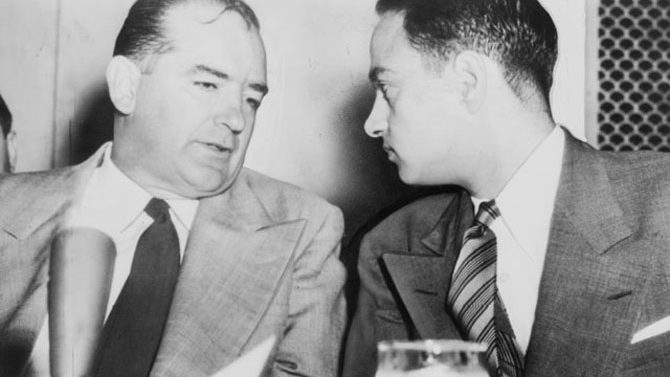A look back at its past can help a nation understand its present and prepare for its future. Philosopher George Santayana famously said, “Those who cannot remember the past are condemned to repeat it.” A glimpse back 65 years to the year 1954 has some lessons for us today.
America then was a nation still traumatized by World War II and the Korean War, and storm clouds of fear and repression shadowed the land. The America of 1954 also was a time of postwar prosperity for much of the nation’s population of about 150 million people, but millions of other Americans languished in poverty, racial injustice and economic uncertainty. The Supreme Court’s unanimous 1954 decision to end racial segregation in American schools was hailed as a hopeful victory for the civil rights movement, but school segregation and Jim Crow laws still prevailed in the American South of 65 years ago.
In Washington on Apr. 7, 1954, President Dwight D. Eisenhower warned of what would be called the “domino theory” when he described foreign nations falling to communism. Later in the year, he promised aid to South Vietnam and presided over a CIA-supported military coup in Guatemala that installed in that country a puppet regime friendly to U.S. corporate and military interests. The president who left office in 1961 with a compelling warning against the machinations of “the military/industrial complex” nonetheless helped to set the stage for later U.S. foreign policy tragedies in countries like Vietnam and Chile.
Fears of the specter of communism were stoked in the America of 1954 by Wisconsin GOP Sen. Joe McCarthy, whose campaign against purported leftists in government, the military, the media and the entertainment industry resulted in a “Red Scare” mentality that was labeled as “McCarthyism” by Washington Post cartoonist Herbert Block.
Youthful attorney Roy Cohn was McCarthy’s chief lawyer during Senate hearings that riveted the nation in the early days of television. Though he was a closeted gay man who died of AIDS at the age of 59 in 1986, Cohn also led the charge to oust suspected gay men and women from their jobs in the federal government. Cohn’s “Lavender Scare” happened at the same time as the more famous McCarthy “Red Scare” that Cohn boosted 65 years ago. Cohn would later become a personal lawyer for future President Donald Trump, and in the 1980s he introduced Trump to Roger Stone, the Nixon-era political dirty trickster who is now ensnared in Trump’s scandals.
Some did fight back against the “Red Scare” of McCarthyism 65 years ago—most notably, newsman Edward R. Murrow, who said, “No man can terrorize a whole nation unless we are all his accomplices.” Speaking to his CBS audience in 1954, Murrow said of McCarthy, “He didn’t create this situation of fear. He merely exploited it, and rather successfully.”
The Progressive magazine published a special edition in 1954 titled “McCarthy: A Documented Record.” The magazine scorned McCarthy and his tawdry tactics with words that still apply 65 years after they were written: “The great hope of the professional demagogue is to avoid public exposure while he plies his trade of creating hysteria, capitalizing on people’s fears, and diverting public attention from basic problems with sideshow stunts.”
Like what you just read? Support Flagpole by making a donation today. Every dollar you give helps fund our ongoing mission to provide Athens with quality, independent journalism.










